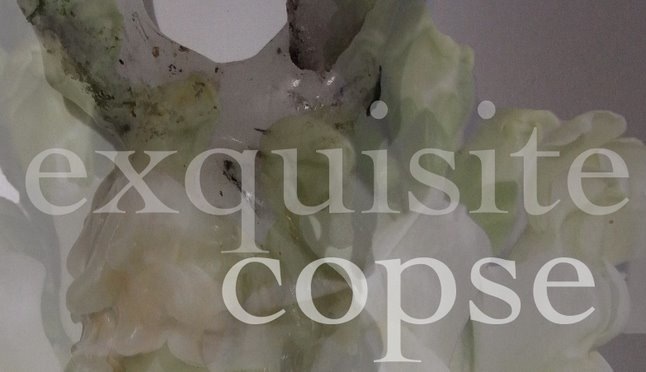
Making good on the early promise of Jaws 3 and that one level in Earthworm Jim 2 where you could wear threedee goggles, everyone from Pixar to Sony to Dazed and Confused is all about creating stereoscopic depth-of-field fx these days. Prizing 'immersion' and lauding fictions/characters for their 'depth' is so commonplace in discussions of books, movies, telly and games that the entertainment industry's desire to literalise those tags is understadable. Not everyone's so big on interiority and volume though; I've been reviewing a lot of gay cinema lately that taps (consciously or not) into a venerable tradition of challenging 'depth > surface' prejudices and queering spaces, whether by incorporating 2D animation & obvious green screen stuff or by peopling films with defiantly puddle-deep caricatures.
It's gotten me interested in films that think seriously about how cinema uses 2D pictures (1440 of them each minute) to create an illusion of 3D space, in stuff like La Jetee and Funeral Parade of Roses, the photo-scanning thing in Bladerunner and the hero of Blow Up trying to make sense of a space/event by pinning photos up around a white-walled open-plan studio. I just watched Herzog's Nosferatu, which - as a remake of an old film about a reanimated corpse - is all about cinema's status as (pace Laura Mulvey) 'death 24x a second.' It opens with a handheld camera moving across a line of dessicated bodies that, thanks to the organic unsteadiness of the camera operator's hand, occasionally seem uncannily vital (usage of the word 'uncanny' is, of course, advised here; the film's chock-full of phenomena Freud catalogues in his perennially-cited piece on Hoffmann and unheimlichkeit). Though I'm sure there'll be all sorts of revealing self-referentialities in upcoming 3D movies, it'll probably be a while before any film makers who're concerned with what the medium is/does can afford to use this tech - which raises a weird issue; Kojima's spent most his career as videogame designer making it clear he wanted to make movies, but it's possible film makers will discover they've a lot to learn from stuff like Goichi Suda' Killer 7 when it comes to doing 3D meaning-making and storytelling.
Of course, the people/objects that come out of the screen will only be telepresent, intangible and odourless (a recent radio ad for a teleconferencing company lists bogus stats regarding how many business people don't wash their hands, shower etc.). Although Sadako crawls out of the telly in Ringu she doesn't lay a finger on her victims, staring them to death instead. Teletactility is technically possible, but (as Vivian Sobchack's discussed) cinema induces tactile sensations in viewers already, and perhaps audiences don't want movies to be more-than-metaphorically 'touching.' I've been making a lot of pictures with chewing gum lately. It lends an ickily material and intimate dimension (and, of course, a literal dimension, a Z axis) to flat, idealised images, especially in the era of Swine flu-induced salivaphobia. It smells nice too.
(Dazed cover from here, gummed Velasquez mine, Sadako from here, M.B.V.3.D. poster here, liquidisation of circa 1960s social convention via camera here, late Dreamcast game resembling aforementioned here, dead Hatshepsut here)







